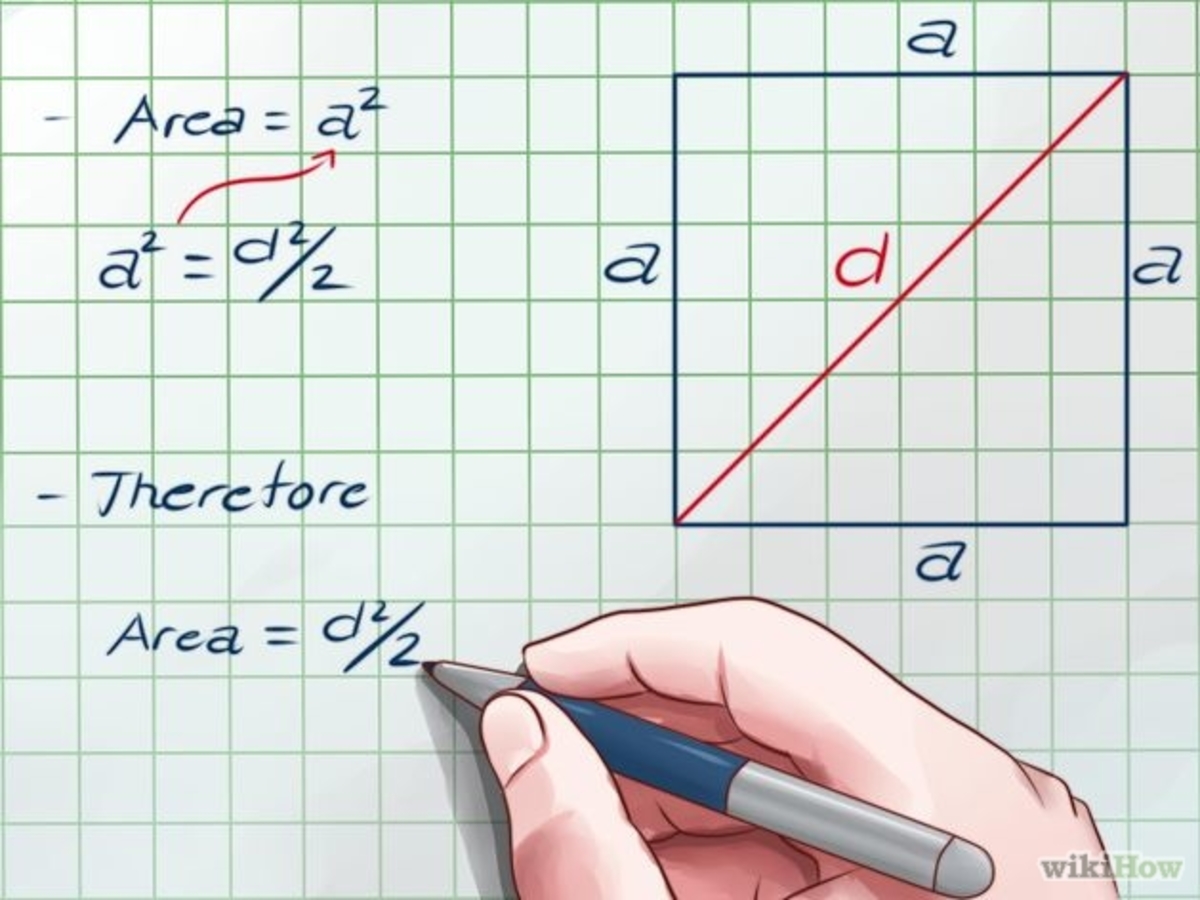maximum area
Find the maximum possible area of the rectangle whose diagonal = 20 unit length.
The answer is 200.
This section requires Javascript.
You are seeing this because something didn't load right. We suggest you, (a) try
refreshing the page, (b) enabling javascript if it is disabled on your browser and,
finally, (c)
loading the
non-javascript version of this page
. We're sorry about the hassle.
5 solutions
This should be Calculus Level 1.
The diagonal length is 20.
The maximum area of a rectangle per diagonal length is a square.
From the 45-45-90 special triangles we can derive that the ration of the side length of a square to its diagonal is 2 1 .
So the side length is 2 2 0 .
So the area is ( 2 2 0 ) 2
So the area is 200.
Let x be the breadth of the Rectangle
The area of a rectangle is given by length×breadth.
The diagonal will be given by the expression
\sqrt{ {length}^{2} + {breadth}^{2} }
Given that diagonal is 20 units long.
We can write
\sqrt{ {length}^{2} + {breadth}^{2} } = 20
Length = \sqrt{400 - {breadth}^{2} }
Area=length×breadth
Area = breadth \times \sqrt{400 - {breadth}^{2} }
Then we need to maximize the function:
f(x) = x*sqrt(400-x^2) using Calculus.
@pawan verma It's a rectangle You need first to prove that max. Area is achieved when it changes to a square xD
Log in to reply
If we're getting to know the maximum area of rectangle using 'diagonal' then it must be a 'square'.
2ab = a^2+b^2 - (a-b)^2 = 400 - (a-b)^2. Therefore, max. value of ab is 200 when a=b.

Let the side lengths of the rectangle be a and b and its area be A . Therefore, a 2 + b 2 = 2 0 2 and A = a b .
By AM-GM inequality, we have:
2 a 2 + b 2 ≥ a b ⇒ A ≤ 2 a 2 + b 2 = 2 2 0 2 = 2 0 0